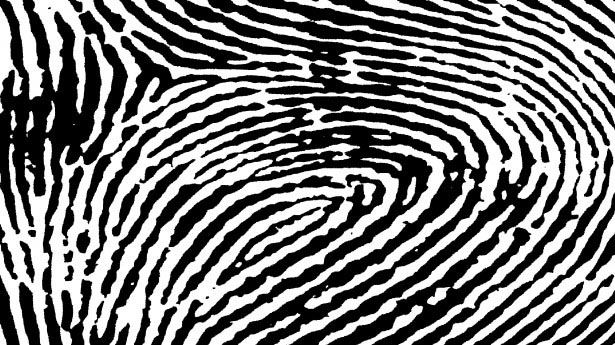Remembering Loved Ones With Cremation Jewelry
Creative uses for ashes abound as people increasingly seek personalized memorials for their loved ones.
By Alanna Weissman
Dee Bergman had her mother's ashes turned into a variety of glass jewelry pieces, including this beaded bracelet from the Etsy shop Remember Them. (Photo: Dee Bergman)
Long gone are the days when saying farewell to a loved one meant putting them into the ground or in an urn. Now, we can wear them as jewelry, turn them into marbles, or even compress them into diamonds.
And that’s exactly what people are doing.
In the last few years, physical objects made using cremains have become increasingly popular in the funerary industry.
Usually called “personalized memorials,” they’re created using ashes and are often much cheaper than burials.
They also offer more possibilities. The ashes can be poured into decorative vials, inked into skin as tattoos, or transformed altogether into wholly new materials, such as glass.
Marcy Lindberg is the owner of In the Light Urns and Stardust Memorials, two online shops that, in addition to urns, sell gold, silver, glass, and wood jewelry intended to hold cremains.
She said she’s noticed more customers trending toward personalized memorials over traditional acknowledgements of death, and estimates that just under half of her purchases are of jewelry.
This cremation glass plant stake by Anna Keene "lives" in a hanging plant that was owned by Dee Bergman's mother. (Photo: Dee Bergman)
Though such items may be unconventional, Lindberg believes anything that helps people process their grief is a good thing.
“The more that you can capture someone about your loved one in the memorial, the more meaningful it is,” Lindberg told OK Whatever.
Some newer types of memorials take that idea quite literally, actually encasing a person’s or a pet’s cremains in custom glasswork.
That’s what Dee Bergman of Kansas did with her mother’s ashes three years ago. She commissioned a variety of cremation glass pieces — including jewelry, statuettes, and plant stakes — to give to her sister, her daughters, and herself when her mother passed.
“I feel really good [when wearing the jewelry]. I know my mom will always be with me, but I actually feel like there’s a part of her that is with me,” Bergman said. “On the anniversary of her death, I called my sister and was like, ‘Are you wearing your favorite earrings?’ And she said, ‘Yes,’ and I was like, ‘Yup, me too!’”
Bergman said she and her mother often went to craft fairs and shopped for handmade jewelry together, so the items are reminders of those happy times.
On a bracelet, she has cremation beads she bought as well as a charm of her mother’s fingerprint, purchased at the funeral home where she was buried. Bergman got the glass plant stakes because her mother had a green thumb, and she keeps them in the pots of the plants that she inherited from her.
The glass pieces she bought came from Anna Keene, a California-based artist who started making metal findings and, later, lampwork beads as a way to supplement the family income when she was a stay-at-home mother of seven. She now runs an Etsy shop, Remember Them, selling a range of glass products — 85 to 90 percent of which are made using cremains.
“Generally, when you make a piece of jewelry, it’s pretty frivolous. It’s fun, or it’s really cute, but there’s not anything that’s super meaningful to it,” Keene said. “But when it’s a piece that’s so personal, it just means a lot more. I get to hear people’s stories, I get to understand their feelings about a person or pet. And to me, that’s just really a significant thing.”
Cremation glass — or the act of turning dead people into something new — isn’t easy for everyone to grasp.
“There are definitely people who think it’s gruesome. There are some people who are very freaked out by the whole idea,” Keane added. “But most people think, ‘Oh, what a wonderful tribute.’ ”
Another artist working in cremation glass is Morgen Dalrymple, who, along with hospice nurse Lauren Glass, runs a glassblowing business called MorgenGlass in Austin, Texas. Though Dalrymple said more traditional glass blown objects, like pipes, account for the bulk of her income, she also sells custom cremation glass pieces — and estimates that about 30 percent of her income is from objects of this nature.
“It’s a good portion of my business, which makes me really happy because I enjoy doing it so much,” Dalrymple said. “It’s way more fulfilling than the other stuff. … [It’s] where I get to be more artistic and make work that’s going to do more than just sit in a head shop. It just feels so much more genuine.”
One MorgenGlass customer, Nathaniel Robinson, commissioned a brown-and-black worry stone to memorialize his and his wife Leigha’s 12-year-old German shepherd Adicus. Dalrymple threw in a few glass marbles as well, which Robinson said is a great way to remember his furry friend.
“Adicus had these amazingly hypnotic brown eyes that just seemed to study you with every move,” he said in an email. “The marbles are just a perfect daily reminder of how beautiful his eyes were.”
Robinson added that since he and Leigha move often, they like that they can easily take the items with them, instead of leaving Adicus’ grave behind, as they would have had to do if they had buried him.
Katie Johnson's kitten Renfield died from a virus at 5 months old. She commissioned MorgenGlass to make a mesmerizing worry stone out of his ashes. (Photo: Katie Johnson)
Some people who have opted for personalized memorials over tombstones and urns do so because they view the former as more upbeat.
“[Urns are] a reminder that they’re gone,” said MorgenGlass customer Katie Johnson, who opted to have her five-month-old kitten’s ashes turned into a green-and-black sphere. Whereas with cremation glass, “when you look at it, you don’t feel sad. You just see the beauty of it, just the way that the ashes mix with the glitter and give it crazy tones and textures. It’s more like a celebration, just a big, colorful swirl of life.”
Another option is cremation diamonds, in which cremains are subjected to extreme heat and pressure, extracting the carbon and resulting in an artificial diamond. But such options can cost tens of thousands of dollars; by contrast, cremation glass pieces are much more affordable, with a lampwork bead from Keene, for example, coming in at less than $100.
In the end, turning your loved one’s ashes into something new won’t take the pain away, but people who have done it say it can help.
“It still hurts. It’s always going to hurt, but it did help me with that grief,” Bergman said. “I look at that plant stake when I walk through the living room and it’s in one of my mom’s plants, and it makes me [feel] like there’s a piece of her everywhere.”
And cremation glass can be therapeutic not just for the loved ones of the deceased, but for the artists as well. Keene described the process as “healing,” and said she was “very honored” to do the kind of work that she does.
“It’s been a real blessing. It’s a way to connect with people on a much deeper level than just making regular jewelry,” she said.
Cremation glass artists also often ask for photographs of the person whose ashes they are working with or stories about what they were like. Some listen to the deceased’s favorite music while working, while others will send videos of the glassblowing process to the customers who commissioned the piece. Dalrymple has her own special practice: She keeps a memorial wall in her studio for photos that cremation glass customers send her.
“I like to bring them back to life a little bit,” she said.











